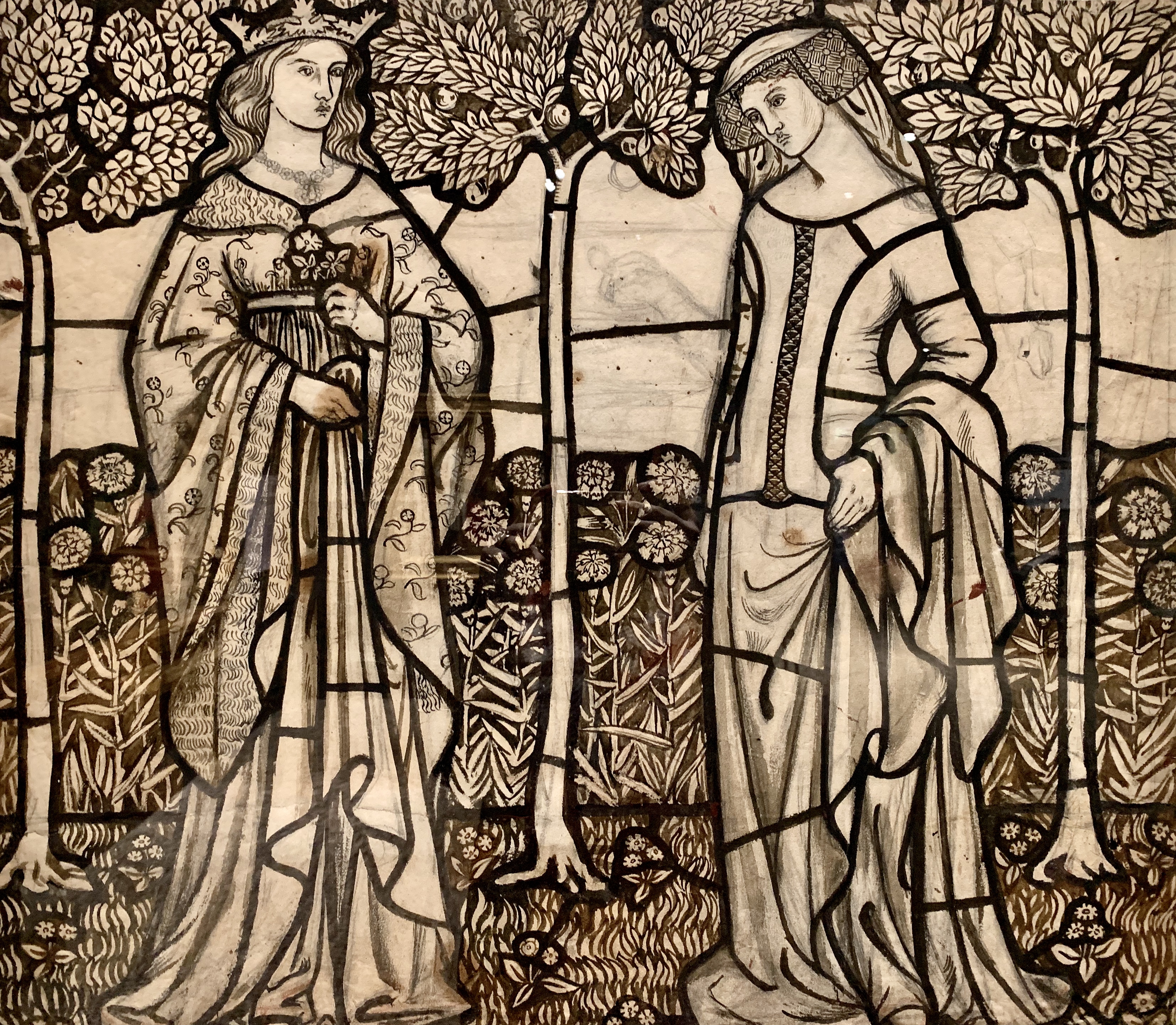The Bowes Museum Blog

William Morris


Tate: Presented by the Trustees of the Chantrey Bequest 1940
One of the most important British artists, William Morris was born today 24 March in 1834. He was active as a textile designer, poet and novelist and a leading figure of the British Arts and Crafts Movement. His literary contributions helped to establish the modern fantasy genre, while he played a significant role proliferating the early socialist movement in Britain.
The Bowes Museum is fortunate to have two of his artworks in the Pre-Raphaelite Knights: Reinventing the Medieval World exhibition.

Guinevere and Iseult: Cartoon for Stained Glass, 1862, Chalk, graphite and watercolour on paper
The Pre-Raphaelites were fascinated by a certain type of female beauty, often depicted in the Medieval or mythological past.
Guinevere was the wife of King Arthur and Iseult the mistress of Tristram. Here they are shown in Medieval dress by designer William Morris in two large final designs or ‘cartoons’ for a set of thirteen windows illustrating the story of Tristram and Iseult for the Bradford merchant Walter Dunlop, at his home of Harden Grange, near Bingley in Yorkshire.
The resulting windows are today in Bradford City Art Gallery.

The Defence of Guenevere and Other Poems, 1904
William Morris was not just a craftsman and an artist, but a talented poet as well. He was much influenced by Medieval literature and Icelandic sagas. He published The Defence of Guenevere and Other Poems in 1858, part of a cycle on the story of King Arthur. In the poem the queen defends herself against accusations of adultery. In this edition of 1904, the illustrations are by the Scottish artist Jessie Marion King, who worked a generation later, along with other Glasgow artists such as Charles Rennie Mackintosh, in a style often now called ‘Art Nouveau’ (new art). The distortion of natural forms did not always gain the approval of the first generation of Arts and Crafts designers who labelled it a ‘strange decorative disease’. More brutally, the tall phantom-like figures of the Glasgow school were christened the ‘spook school’ by humorous commentators of the time.

Leeds University Library, Special Collections, Illustrated Books Collection B-2/KIN
To learn more about the Pre-Raphaelite Knights exhibitions click here.







